The right laser TV screen
In order to get the maximum picture performance out of a laser TV, you need a special screen. With a conventional white screen, especially with this type of projection, you otherwise ignore a large part of the possible image. In this article we would like to explain the various options to you in more detail and explain the advantages and disadvantages of the different types of canvas.
With an ultra-short-throw projector, the image is projected onto the screen at an angle, i.e. from below onto the corresponding screen. This can also be done from above with most laser TVs. The same applies here, except that the image is projected diagonally from above onto the screen below. The problem why a conventional screen is bad for picture performance is due to the type of screen and the law of reflection.
The law of reflection says:
- The incident ray, the normal of incidence and the reflected ray lie in one plane.
- The angle of incidence and the angle of reflection are equal.
- Furthermore, the light path is reversible. That is, if the light is incident from the direction of the reflected ray, it is reflected in the direction of the incident ray.
Put simply, the projected image and therefore most of the brightness is reflected onto the ceiling. The following graphic illustrates the whole thing again. Therefore, a normal white screen, which is often used for front projection, is unsuitable. We would have the same problem if we used a normal wall surface.

The goal should therefore be to reflect the direction of the incident light beam (image) as straight as possible to the viewer. So that the most brightness ends up at the actual seat. This alone increases the image quality enormously. A special screen is used here. With so-called CLR screens, microscopic optical filters have been positioned to optimally direct the projected light towards the viewer, with the positioning of these filters also blocking the light from above. This allows us to achieve a significant increase in contrast, and by blocking the light sources from above (e.g. lamps) the picture looks much better even in brighter surroundings. The next graphic illustrates how a CLR (Ceiling Light Rejecting) works.


A second advantage of the CLR screens is that a contrast-enhancing material is used here. The screen material is gray and doesn't reflect quite as much light back to increase contrast. However, the light that is "swallowed" benefits the black level. We got a better black level in brighter environments and we also distinguished ourselves from an increased black level in darker light environments. As a result, the picture looks more vivid and the colors are more powerful.

The different CLR screens for Laser TVs
There are a total of three different types of CLR screens for laser TVs. The principle does not differ in any of these types, but rather the purpose of the application. In addition to a classic frame screen, there is a ceiling motor screen and also a floor motor screen. The frame screen, followed by the floor motor screen, is the most commonly used variant.
Advantages and disadvantages of the CLR frame screen
| Advantage | Disadvantages |
|---|---|
| + Fairly easy installation | – Also visible when the Laser TV is switched off |
| + Lasting perfect flatness | – Difficult to clean |
| + Does not require electricity | |
| + Low purchase price | |
| + Perfect black level (e.g. CLR Black STAR) |
Pros and cons of the CLR floor motor screen
| Benefits | Disadvantages |
|---|---|
| + Perfect integration into furniture possible | – Requires electricity |
| + Not visible when the Laser TV is off | – Short lead time makes positioning and installation somewhat limited, especially when the screen is integrated, this needs to be planned carefully. |
| + Can be automatically raised and lowered with the Laser TV | – Cloth material difficult to clean |
| + Perfect black level (e.g. CLR Black STAR) |
Pros and cons of the CLR ceiling motor screen
| Benefits | Disadvantages |
|---|---|
| + Can be installed on the wall and ceiling | – requires electricity |
| + If the laser TV is off, you can't see anything (screen is simply retracted) | – More complex installation regarding advance and positioning of the laser TV |
| + Tension system for a proper flatness | – Only 30 cm or 35 cm advance (depending on model and image size) |
| + Extensive range of accessories | – Cloth material difficult to clean |
-
 Elite Screens Saker Tab Tension DarkStar CLRab 2.699,00 €
Elite Screens Saker Tab Tension DarkStar CLRab 2.699,00 €VAT included
excl. Shipping Rate
Delivery time: 3-5 days
Special canvas
In addition to the CLR screens, manufacturers such as HKW Screens and Elite Screens present the innovative SoftFresnel screens, developed by a competent team for optimal use of daylight. This special screen features a unique eight-layer optical microcomposite structure that absorbs almost all light - except from below - to efficiently direct the laser TV light towards the viewer. This significantly improves the black level, comparable to CLR screens, and increases daylight suitability and image quality even in dark rooms with 90% higher ambient light absorption and a significantly improved gain value. The SoftFresnel LUXU screen, together with the Elite Screens Daylight Extreme, is considered the frontrunner among frame screens for laser TVs, which deliver excellent picture results even in daylight conditions and make the laser TV usable during the day like an ordinary television - a truly advanced product.


Pros and cons of daylight screen:
| Benefits | Disadvantages |
|---|---|
| + Fairly easy installation | – Visible even when the Laser TV is switched off |
| + High luminous efficacy thanks to higher gain | – Not quite as strong a black value as a CLR screen (but the light output is better) Advantages & Disadvantages ;) – With the SoftFresnel LUXU we almost have an identical black value to the CLR. |
| + 85-90% more ambient light absorption than CLR | – More expensive due to the special structure compared to a CLR screen |
| + Very good viewing angle properties (but less than with a CLR) | |
| + No power connection required | |
| + Cloth is easily washable | |
| + Better suited for 3D Laser TVs |
Laser TV optimized canvases
The last category is the so-called optimized screens for laser TVs / ultra short throw projectors. These screens are usually also conditionally suitable for use as a front projector, since no incident light is explicitly blocked. With this type of screen, it is more about optimizing the picture performance with coordinated cloths. Unfortunately, the clear disadvantage is that, like a white screen, it continues to reflect a large part of the light output back onto the ceiling. This disadvantage is often accepted because it is an alternative to the otherwise very limited CLR ceiling motor screens. Due to the higher advance, the Laser TV with the more flexible installation option of the screen can be set up more easily and you don't have to make as many compromises by far, at least as far as the installation is concerned. As an example there is the very popular VnX Movie Dream UST.
Advantages and disadvantages of the optimized canvas cloths:
| Benefits | Disadvantages |
|---|---|
| + Laser TV can be installed on the ceiling or on a low board | – Worse image performance than the above screens |
| + High offset allows for easy positioning and alignment | – requires electricity |
| + High-quality flatness thanks to premium cloth + tension rope system | |
| + Improved black level | |
| + Cloth is easily washable |
Here we recommend the Elite Screens Starbright or HKW Screens CLR Black STAR, closely followed by the new SoftFresnel LUXU
Clearly the HKW Screens SoftFresnel LUXU or Elite Screens Daylight Extreme. The possible light output is phenomenal with these models. The SoftFresnel Luxu is recommended for mixed operation.
Clearly the HKW Screens SoftFresnel LUXU!
No, the Laser TV must be positioned here on the lowboard. Consider the lead time and the resulting installation options. With the VnX Movie Dream UST, the Laser TV can also be positioned on the ceiling. Consider here that with high ceilings the picture starts relatively high up.
Yes, that is possible. Please note that the laser TV screen (CLR frame screen) must be rotated by 180 degrees. The material for the bottom has to be at the top accordingly, otherwise the image performance suffers massively.

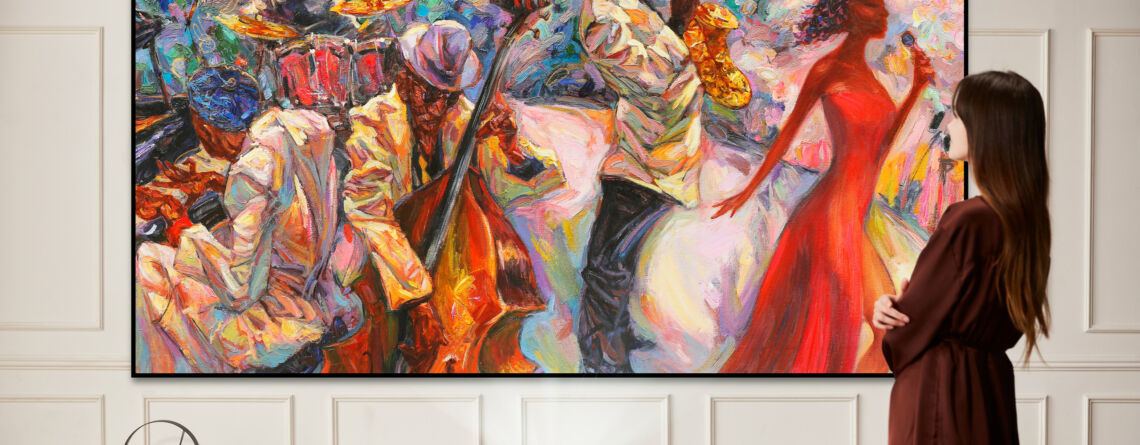
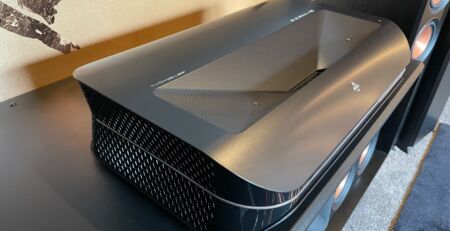

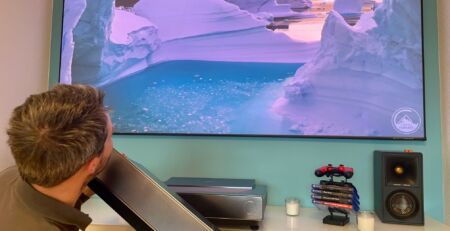
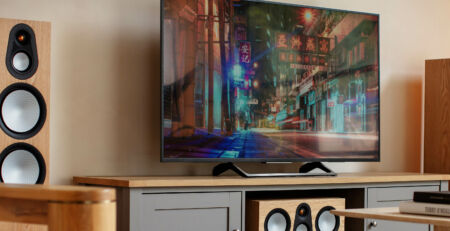
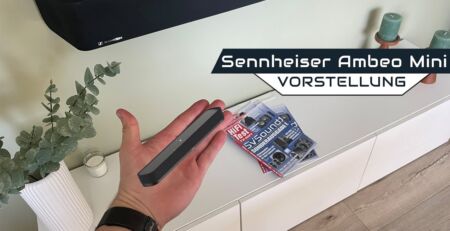

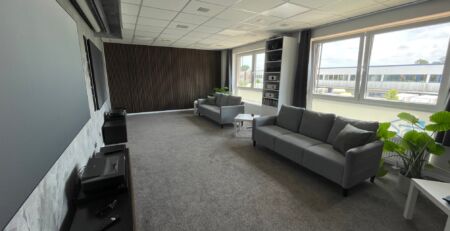

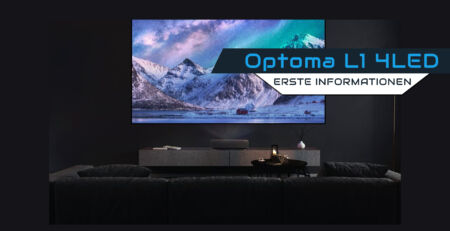
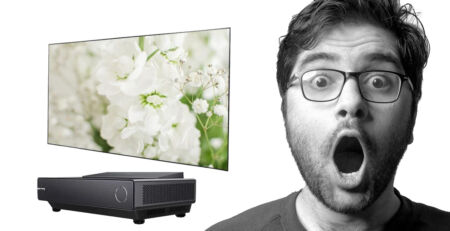

Comments (4)
[…] new reference Laser TV from LG with 3700 lumens provides a high-contrast picture with the right screen – even with […]
[…] 32 µs, which is 500 times faster than an LCD TV. As with its predecessors, it comes with a special screen (Fresnel type) whose peculiarity is to […]
[…] Are you looking for the right screen for your Laser TV? Take a look at our other post: The Right Laser TV Screen […]
[...] project really fits. But we won't leave you alone here either. For example in our blog: The right laser TV screen - already a detailed article about the different screen types and types. Also […]